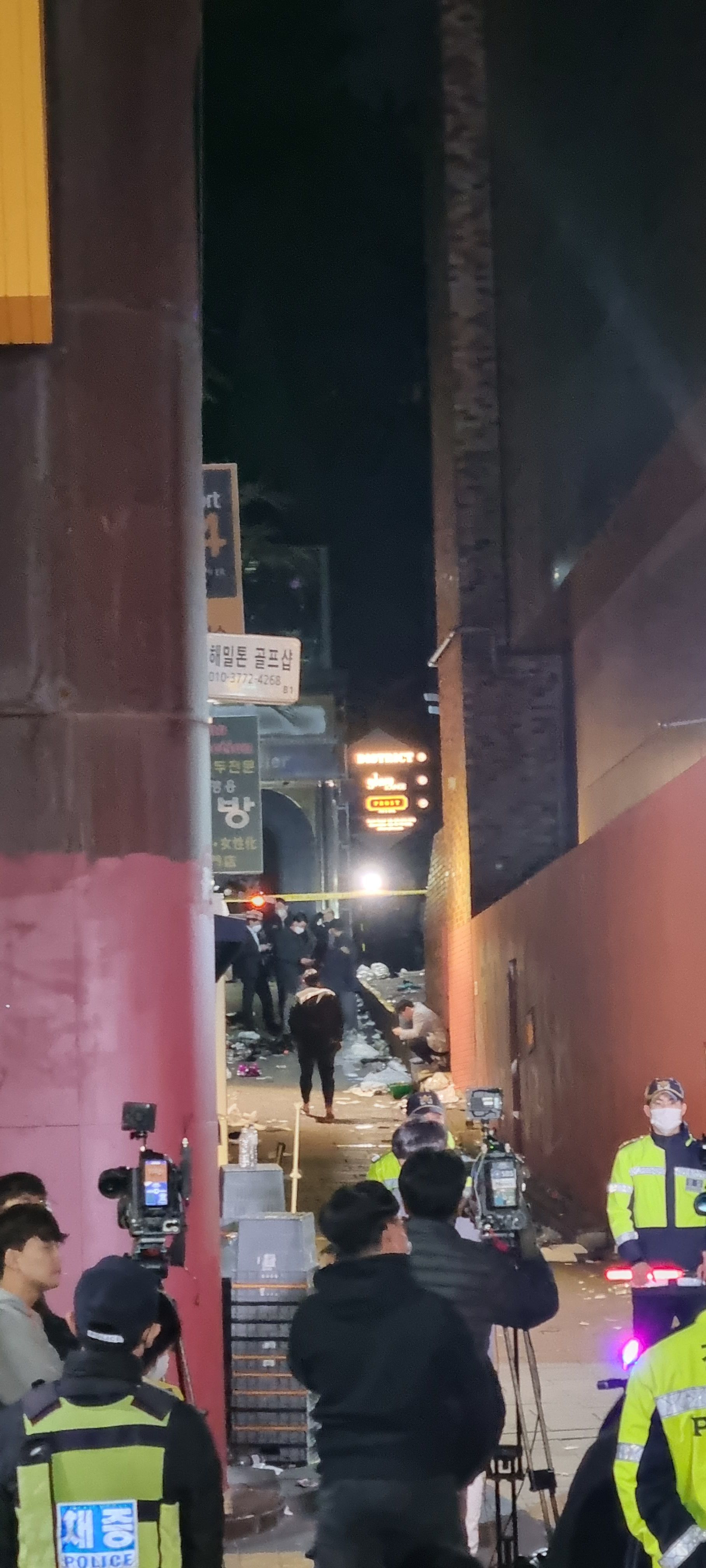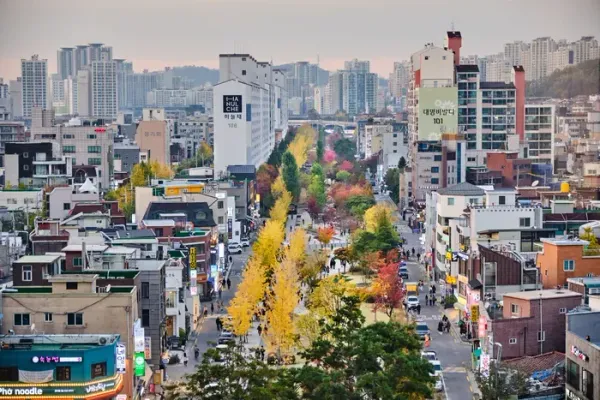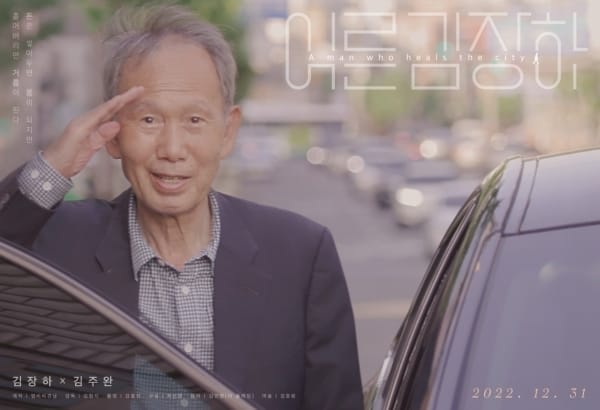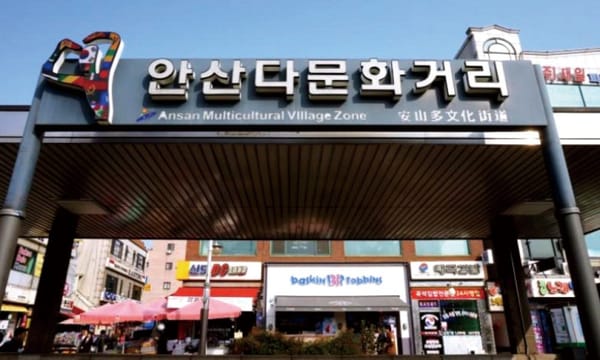Photo: Alleyway next to the Hamilton Hotel, in which most of the casualties occurred. Credit: the Blue Roof.
The Itaewon 이태원 district in the northern part of Seoul has always been where cultures meet. First developed as an entertainment area for the US soldiers stationed nearby, Itaewon has long been the gathering place for Western expats, the birthplace of K-pop, and a haven for the LGBTQ+. In the past two decades, the area has gradually shed its seediness and evolved into a hip party district lined with bars, restaurants and clubs.
Halloween, another cultural import, has become one of the neighborhood’s biggest parties, a chance for young people to feel liberated with costumes, dancing and drinking. This year was supposed to be a special one: the first Halloween in three years without masking or social distancing guidelines. The police were estimating a crowd of 100k to flock to the area, whose center is the Itaewon subway station off Line 6 and the Hamilton Hotel 해밀턴 호텔.
The disaster struck around 10 p.m. on October 29. A throng of people swelled into a narrow alleyway that connected the main boulevard where the subway station was located, and the party street near the hotel. The alley was no wider than 5 meters across in some areas, and had a steep incline. With no crowd control, the confused partygoers pushed and shoved in all directions, crushing those trapped in the alleyway.
Soon, more than a hundred people lay on the street in cardiac arrest, as emergency responders and passers-by desperately administered CPR. Unaware of the mass death event unfolding next to them, or confusing the first responders with other partygoers in costume, some of the crowd continued to sing and dance on the streets. Overnight, South Korea watched in horror as the death toll climbed from 50 to 120 to 155 as of this writing.
The coming days will reveal more details on the failures that led to this disaster, which is the worst of its kind in South Korean history. But any investigation must answer this simple question: what was different about this event, this year?
Seoul, a megacity with 26m people in its metro area, is a place where thousands gather to a single place at any given place or time. For example, every day more than 140k people enter and exit through the Gangnam subway station 강남역 off Line 2. Events with a massive crowd are common: the 2016-17 Candlelight Protests at their peak drew more than 1m to central Seoul each week. This year’s Halloween party in Itaewon was not even its largest; in 2017, more than 200k gathered in Itaewon.
Yet no such crowd-related incident happened in any other year involving any other event. Seoul’s closest analogue of the Itaewon disaster occurred more than 60 years ago in 1960, when a crowd attempting to board a train for the Chuseok 추석 holidays at Seoul Station 서울역 piled on uncontrollably, killing 31 persons. Previous to the Itaewon disaster, the deadliest crowd-related incident in South Korean history was in 1959 in Busan 부산, where 67 died when a crowd rushed to exit a stadium to avoid a torrential rain.
Although it has been only two days since the incident, signs of failure in public service are already visible. The Local Festival Safety Management Manual 지역축제장 안전관리 매뉴얼, issued by the Ministry of Interior and Safety 행정안전부 in March 2021, requires public safety planning for events with more than 1k attendees. The Yongsan-gu district 용산구, where Itaewon is located, had no such plan. When asked why there was no plan, district chief Park Hee-yeong 박희영 용산구청장, a conservative who was elected in the Local Elections 지방선거 held in May, gave a mealy-mouthed answer: her office was not responsible because the Itaewon Halloween party was a “phenomenon” rather than a “festival.”
Seoul’s City Hall has a real time crowd monitoring system based on cell phone location data that also gives a 12-hour prediction of future crowd size. It was never used on the night of the incident. When a crowd reaches a certain level around a subway station, the police may request the subway trains to skip the station. No such request was made until after the incident. Last year, the police had entirely shut off the particular alleyway where the incident happened. This year, eyewitnesses said there was little effort for crowd control, although storekeepers of the area previously put in requests to the police and the district office.
Yongsan District Police Agency 용산경찰서 said it was planning to staff 200 policemen at the event. The actual number of the policemen at Itaewon was 137, with only 58 officers in uniform - the rest being plainclothes officers focused on petty theft and drug offenses, not crowd control. When the National Policy Agency spokesman was asked about why there were fewer officers in Itaewon than planned, he responded: “This is the first time I’m hearing there was such a plan.” On the same evening, 6.5k police officers were present in Gwanghwamun 광화문, a ten-minute drive north of Itaewon, where a relatively small-scale Candlelight Protest against the Yoon administration with 25k attendees was being held.
When asked why there was such an imbalance in the allocation of police resources, Interior Minister Lee Sang-min 이상민 행정안전부 장관 said: “The crowd at Itaewon was not any larger than in previous years. It was not something that could have been prevented with additional policemen or firefighters. We were stretched thin because of the various protests around the city.” In addition to the abdication of responsibility, Lee’s answer fails to respond to the question of what was different about this event, this year. In October 2016, for example, the first round of Candlelight Protest against Park Geun-hye 박근혜 was being held while Halloween festivities in Itaewon were ongoing.
Meanwhile, the Yoon Suk-yeol 윤석열 administration is on edge. The Itaewon disaster is the largest mass casualty event in South Korea since the Sewol Ferry Disaster 세월호 사건 in 2014. The Itaewon disaster, with its numerous young victims, has significant parallels with the Sewol Ferry Disaster, in which more than 300 passengers, most of them school children on a field trip, drowned as the ship capsized. The incompetent rescue effort in the disaster, as well as the Park administration’s demonization of the parents of the children, became the beginning of the end of the Park administration that ended in impeachment.
From that recent history, a responsible political party would draw a lesson to put public safety as its first and foremost priority. But that has not been the Yoon administration’s approach. In less than six months in his office, Yoon Suk-yeol has failed multiple times to answer the same simple question: why are incidents of this kind happening this year, when they did not before? Why did Seoul’s flash flood this year kill so many, when the city floods every year with few casualties? Why is COVID-19 spreading at a record pace now, when South Korea at one point was leading the world in the pandemic response? Unless Yoon manages to give a good answer this time, his already unpopular presidency will sink further.








